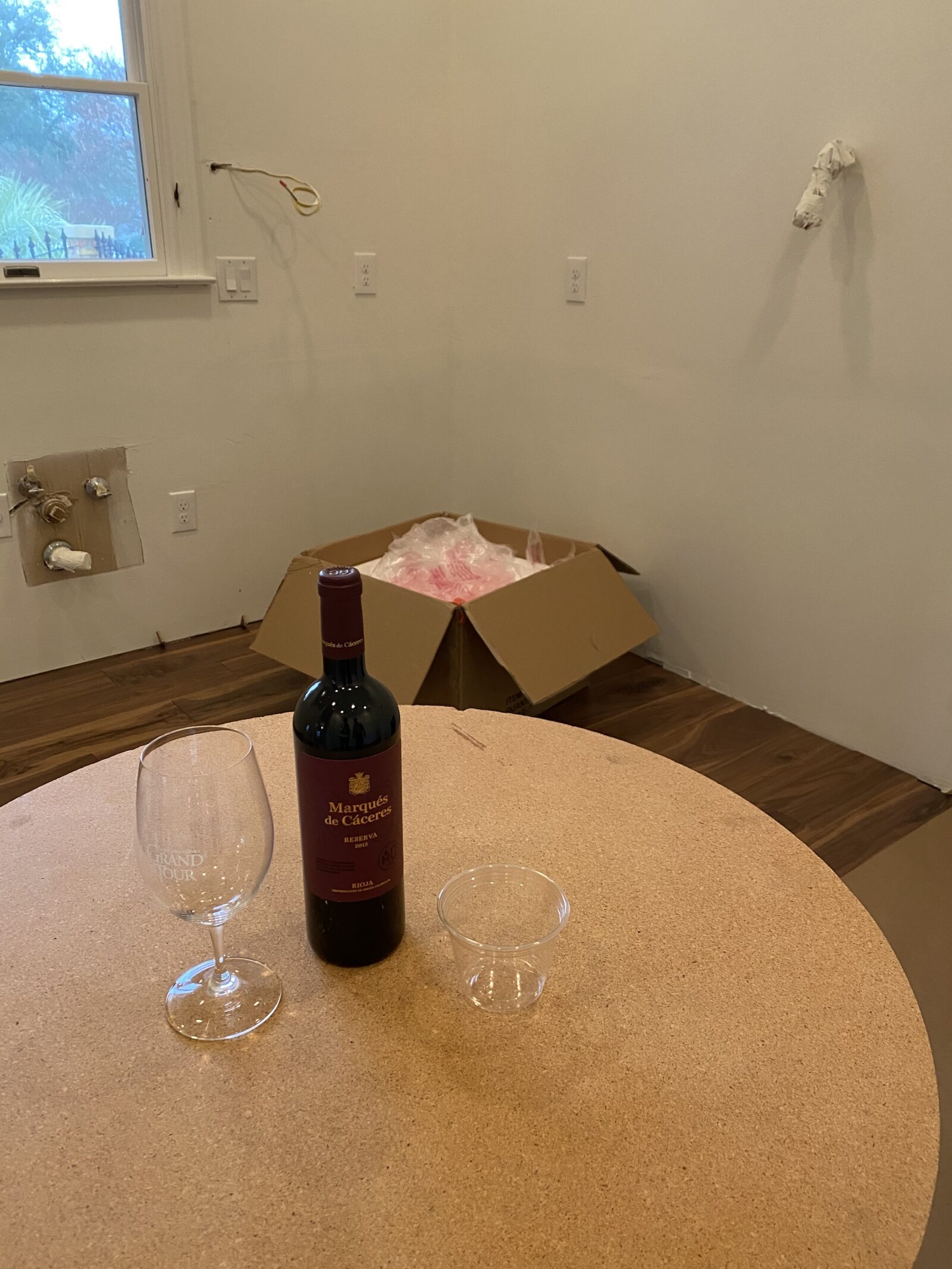
What better way to start a new year than by renovating your house? What, you ask, does that have to do with wine? Well, no matter how carefully you plan, a renovation takes longer than you expected. Which means that at some point things are far enough along that you can move back into the house, but confusion and disorder still reign. Which led to two discoveries about wine: (1) living in a house undergoing renovation will dramatically increase your wine consumption and (2) less obviously, wine glasses significantly affect how a wine tastes.
Here’s how it played out. All of our normal wine glasses were carefully packed away, so we used some small plastic cups. We poured a hearty red and found that it had virtually no wine aroma or taste. Our first instinct was to dismiss the wine as unpleasant and pour it out, but instead we found a proper wine glass and discovered that the wine now had a nice fruity aroma and taste and was quite enjoyable. Why?
- The shape of the “glass” matters a lot. That’s because most of a wine’s (and any food’s) taste comes from its aroma. Don’t believe it? Try covering you nose, or having a bad cold, and see how food tastes – you won’t taste much at all. So the first problem with our plastic glass is that it had outwardly flared sides that allowed the aroma to dissipate to the point the it was almost undetectable, causing the wine to be tasteless. In contrast, when we tried the same wine in a standard “tulip-shaped” wine glass, the aromas were concentrated under the nose and now the wine was quite pleasant.
- The material from which a container is made also matters. Glass is neutral as to taste and temperature. The same can’t be said about plastic or cardboard, which have their own unique aromas and tastes and are can quickly affect the wine’s temperature. When we used a plastic cup, there was a noticeable plastic aroma.
That’s something to think about if you’re having a party, or a picnic, and plan to use cheap plastic wine glasses for an easy cleanup. Even if you get ones that are shaped like a wine glass, the plastic will degrade the wine’s taste, so why bother with a really nice wine? In the same vein, retailers sometimes give wine tastings using small plastic cups – that’s not such a great idea, since you won’t really get a fair sense of the wine. Which for some cheap wines may be a blessing.
- So, what about the different shaped glasses for different wines? They can make a difference, but perhaps not enough for the typical wine drinker to notice – except for Champagne. The flute-shaped glass prevents the bubbles in sparkling wine from dissipating quickly. More on this in a future post.
Our wine of the week is a 2013 Rafael Tirado “Labertino” from Chile’s Maule Valley. In keeping with the theme of confusion and disorder, I have no idea how much this wine cost or where we bought it. After a long day of construction clatter we needed a drink and this bottle was was the most easily accessible. It’s 60 percent Merlot, 30 percent Cabernet Sauvignon, and 10 percent Cabernet Franc. It has floral and red fruit aromas. On the palate, it’s full bodied, with notes of red fruit, spice, and chocolate, mild tannins and a medium finish. Overall, a nice wine – when served in a decent glass.
- Chile produces some nice Cabernet Sauvignon and Bordeaux blends. They’ve very distinctive -- you’ll either like them or hate them. The Chilean Cabs are typically a good value and worth exploring.
Cheers!

Nice, enjoyable and informative article.
Love the wood floors!